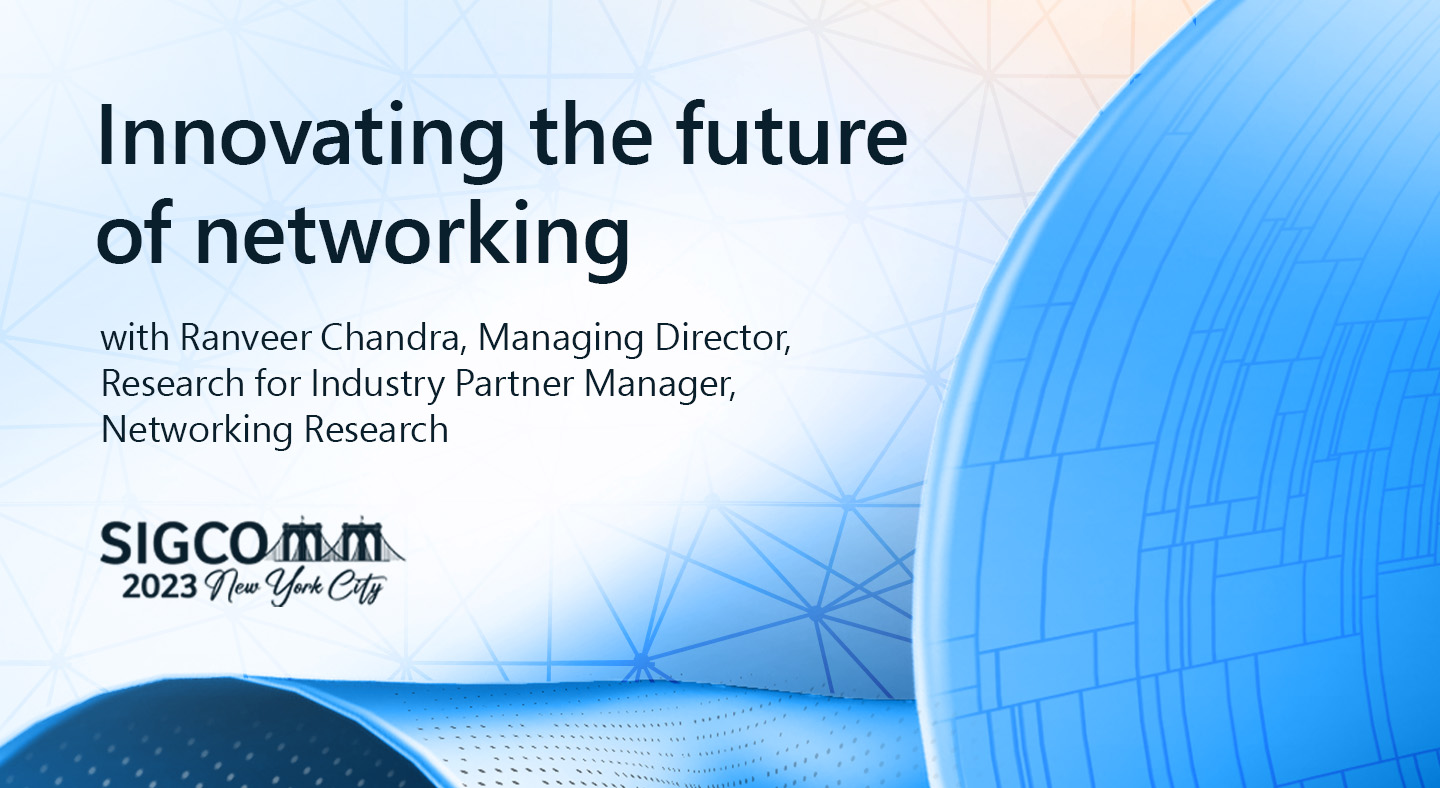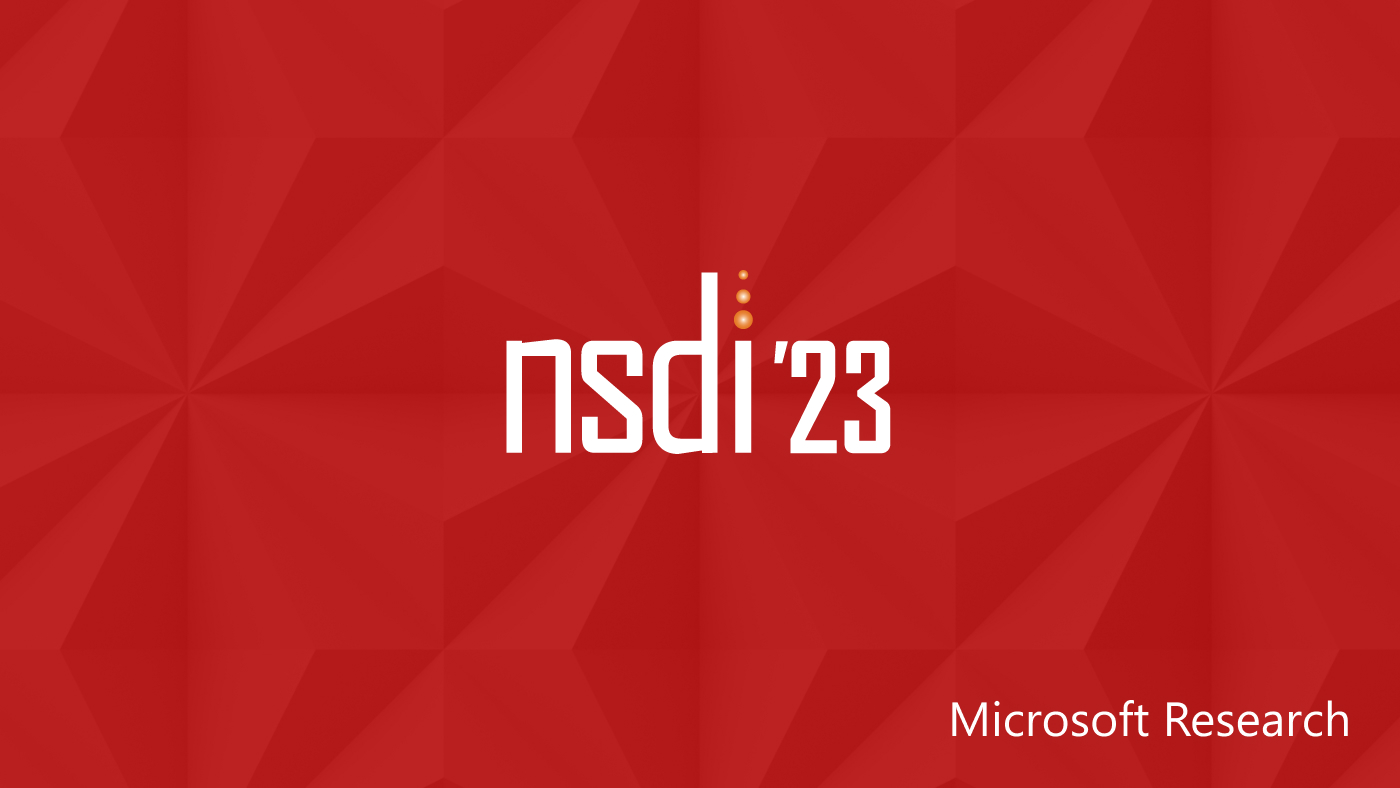By Rob Knies, Managing Editor, Microsoft Research
Feng Zhao has a vision. He sees a future in which a Reality Browser enables people from around the world to query the physical world, live and up close, from anywhere. He sees a virtual global observatory, a Macroscope, if you will, that enables a user to monitor Earth’s entire environment simultaneously.
To underscore Microsoft Research’s continuing commitment to such innovations in the discipline of sensor networks, Zhao’s Network Embedded Computing (NEC) group, together with the External Research & Programs (ERP) group, were organizers of Sensor Networks Workshop 2005, held Oct. 10-11 in Woodinville, Wash. The event gathered industrial and university researchers to brainstorm about next-generation sensor networks and their integration with Web services and other IT infrastructures. From all indications from the attendees, it was a smashing success in this burgeoning field.
Microsoft Research Podcast
Collaborators: Renewable energy storage with Bichlien Nguyen and David Kwabi
Dr. Bichlien Nguyen and Dr. David Kwabi explore their work in flow batteries and how machine learning can help more effectively search the vast organic chemistry space to identify compounds with properties just right for storing waterpower and other renewables.
“Think of it as a kickoff summit for the next leap in sensor networking,” said Stewart Tansley, an ERP program manager. “We brought together some of the best, leading lights in the area to discuss key challenges and opportunities—all the experts in the same room, cooperating and creating.”
Attendees for the event included 22 academicians from leading universities, guests from Intel and the Oak Ridge National Laboratory, and 20 participants from Microsoft. Five of Microsoft Research’s six labs were represented, as were the Virtual Earth and MapPoint product groups.
“Every research discipline needs a grand challenge,” said Zhao, senior researcher and manager of the NEC group. “This workshop has given the field an opportunity to consider that challenge and drive novel research directions to tackle it.”
The workshop focused on three areas:
- Foundations—covering fundamental issues arising from sensing, system architecture, and programming.
- Services—addressing data management, service composition, and interoperation.
- Platforms and applications—examining what it takes to make sensor networks a more practical platform solution for problems arising from scientific research, as well as from consumer and business applications.
“It was a snapshot of the state of the art,” said Zhao, co-author, with Leonidas Guibas, of Wireless Sensor Networks: An Information Processing Approach.
On the back cover of that book, Gordon Bell, Microsoft Research senior researcher, is quoted as saying, “Wireless sensor and actuator nets, also known as motes and smart dust, are an emerging computer class based on a new platform, networking structure, and interface that enable novel, low-cost, high-volume applications.”
This field of study holds vast promise. Take Zhao’s Reality Browser concept, for example. He envisions an ecosystem in which a network of sensing devices can communicate with a server such disparate information such as whale-migration patterns, real-time traffic, and viticulture monitoring, for anybody able to query that server.
“What’s the temperature of my favorite beach?” Zhao smiled.
There are a number of ways in which sensor networks could play a valuable role in helping people glean the most from the world around them. In a keynote speech entitled Challenge Problems in Sensornet Research, delivered at Harvard University on Oct. 18 during the 2005 Networking of Sensor Systems Principal Investigator and Informational Meetings, Zhao cited four distinct areas:
- Environment: volcano study, underwater monitoring, and rain-forest conditions.
- Education: K-12 interactive learning and virtual laboratories.
- Leisure: virtual travel and microclimate trackers.
- Getting around: Where is the nearest available parking space? What is the traffic like on the bridge? How long is the queue at the gas station? Where is the bus?
But such broad-ranging networks present special challenges, as Tansley noted during the Wireless Sensing Solutions conference, held in Chicago in September. In a talk called Wireless Sensor Networks: Bridging the Physical and Enterprise Computing Worlds with IP, Tansley voiced a need for new programming models, architectures, and tools; the importance of developing an improved ability to compute despite environmental and system uncertainties; and a need for innovative applications.
“It’s great to see startups begin to tackle practical problems,” Zhao told his Harvard audience. “But the research community must set its sights further and higher to lay the groundwork for a new industry.”
Hence the need for the Sensor Networks Workshop 2005. The goal of the workshop was to enable participants to gain a better understanding of the state of the art and to identify a key set of open research problems, as well as to identify areas for potential collaboration.
The workshop featured two keynote speeches. Kris Pister, founder and chief technology officer of Dust Networks and professor at the University of California at Berkeley, spoke on From Smart Dust to Reliable Networks, and Tony Hey, Microsoft corporate vice president for Technical Computing, delivered a speech entitled E-Science, Cyberinfrastructure, and Sensor Networks.
On the second day of the event, the participants split into three breakout groups to discuss the aforementioned focus areas. The Foundations group discussed challenges including architecture of heterogeneous sensor networks, performance analysis, tools, and programming models and abstractions.
The Services group brainstormed on application spaces and the properties and the requirements of applications, concluding that more experience is needed to design appropriate service interfaces and to learn more about which services could prove beneficial.
The Applications and Platforms group identified a substantial list of areas in which sensor networks could prove vital, including personal environments, supply chains, industrial modeling and control, and environmental monitoring. The team also discussed creating standard building blocks of hardware and software to make sensor networks efficient and ubiquitous, with the twin goals of reducing deployment cost and effort and of improving interoperability.
The net result was a watershed moment for an exciting computing discipline still in its early stages.
“The breakout groups were great,” Zhao said. “People shared their insights with one another. It was a great start. A lot of productive connections have been made.”
Tansley was eager to extend the momentum engendered.
“It would be nice,” he said, “to host a follow-up event and leverage the relationships built and strengthened during this event.”
Zhao acknowledged that workshop-derived energy and looked to the future.
“We looked at the foundation and what we are missing in research,” he said. “A notion of synthesizing reliable complex systems from vast numbers of unreliable components—systems that scale—is very interesting.”





